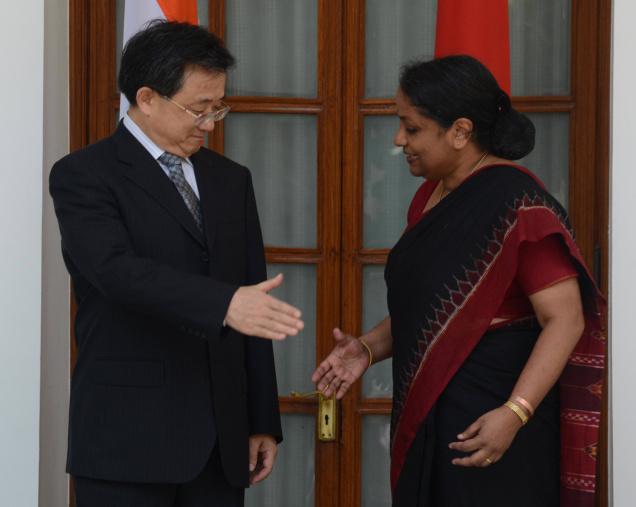 NEW DELHI, August 20; The Fifth India-China Strategic Dialogue held here on Tuesday saw both sides making firm moves to narrow the massive balance of trade in Beijing’s favour but discussions on the border issue and trans-border river flows saw them reiterating positions stated during the high-level meeting in July this year between Prime Ministers Manmohan Singh and Li Keiqang.
NEW DELHI, August 20; The Fifth India-China Strategic Dialogue held here on Tuesday saw both sides making firm moves to narrow the massive balance of trade in Beijing’s favour but discussions on the border issue and trans-border river flows saw them reiterating positions stated during the high-level meeting in July this year between Prime Ministers Manmohan Singh and Li Keiqang.
On the border issue, that has come to the fore after two incidents along the Line of Actual Control (LAC), both sides put their faith in the most recent bilateral mechanism — the Working Mechanism on Border.
Meeting for just over three hours, the two sides led by Foreign Secretary Sujatha Singh and Chinese Vice-Foreign Minister Liu Zhenmin, hoped they would soon finalise a Border Defence Cooperation Agreement (BDCA) that will seek to update a 2005 agreement on maintaining peace and tranquillity by adding some more components agreed upon during the intervening years. Two meetings have been held on the subject and India is currently examining a reworked Chinese draft on a BDCA.
But the Indian proposal for a separate mechanism to deal with trans-border river flows once again failed to win the approval of the Chinese who appeared content with the current Expert Level Mechanism that deals with flood-season data of Satluj and Brahmaputra rivers and help in emergency management. With fears about possible diversion of the waters of Brahmaputra from the Great Bend area in Tibet, India wants a joint mechanism that can make timely assessment of water flows. At present it comes to know of Chinese moves to build dams on the Brahmaputra through aerial reconnaissance and intelligence reports. A formal acknowledgement by China comes in its plan documents and this happens a couple of years after reports about construction activity at a particular place on the river.
But most progress was made in the area of investment and trade with both sides identifying certain measures that could yield $7 billion annually in additional trade for India three to five years after they are implemented. India currently runs a $35 billion annual trade deficit with China and needs steps like these to make bilateral trade sustainable.
Import duty on cotton fabrics
In case China halves import duty on cotton fabrics from the current 10 per cent, India could raise its exports from $700 million to $6 billion in three-to-five years. And if phytosanitary norms are simplified, buffalo meat exports could net India another $1 billion annually. Relaxation of similar standards in areas such as marine products could add more value to exports from India.
There was a discussion on Chinese investment in India relating to industrial parks. Currently the two sides are working on an MoU and are aiming for early finalisation to enhance Chinese investment in India. As China is exporting power equipment in large numbers, the need for setting up service centres in India for servicing this equipment was also discussed.
The Strategic Dialogue is among the several bilateral mechanisms that intermittently meet depending on the state of play of ties. This particular dialogue was held after nearly three years and conducted a complete review of pending issues. The starting point was the joint statement issued after the Manmohan Singh-Li Keiqang meeting with an eye on a possible visit to Beijing by Dr. Singh.
According to an official release, issues discussed by the two sides included enhancing understanding on the utilisation of trans-border river waters, addressing problems of the large and growing deficit faced by India, ways of maintaining peace and tranquillity along the LAC and expansion of scientific and technological cooperation.
